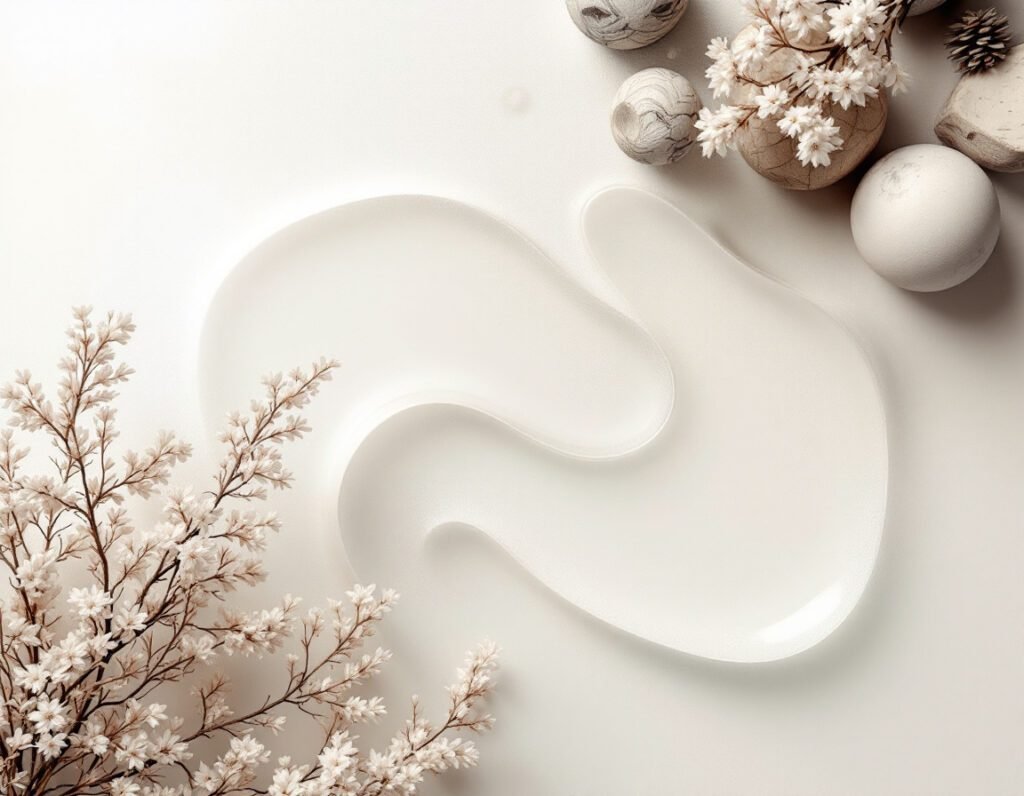Anxiety and Breathing Exercises: Simple Techniques for Calm and Faith

Anxiety touches so many of us, sometimes it shows up as a constant hum, other times as a sudden wave that knocks us off balance. It’s tough trying to go about your day with worries swirling in your chest and mind. When anxious thoughts settle in, simple things can feel overwhelming and peace seems out of reach.
Breathing exercises offer a practical, science-backed way to quiet the mind and calm your body. With a few mindful breaths, you might notice your heart rate slowing and your thoughts becoming clearer. For many, pairing these exercises with faith practices helps restore a sense of steady hope and comfort.
You’ll find that small changes like controlled breathing can have a big impact. This post covers easy practices for anyone looking to find relief from anxiety and it’s beginner friendly. Whether you want techniques rooted in faith, mindfulness, or both, you’re in the right place.
Understanding Anxiety and the Mind-Body Connection
When anxiety shows up, it isn’t only in your thoughts. It sits in your chest, makes your hands sweat, and leaves your stomach in knots. Anyone who has struggled with anxiety knows the symptoms can affect nearly every part of daily life, not just your mood or outlook. Understanding how anxiety shapes the body, and how your breath can help, lays a strong foundation for finding relief.

What Anxiety Feels Like
Anxiety often feels like too much to carry at once. The symptoms are more than just worrying about tomorrow or replaying awkward moments. You might notice some of these signs:
- Chest tightness or a racing heart
- Quick or shallow breathing
- Muscle tension (hello, neck and shoulders)
- Upset stomach, nausea, or butterflies
- Feeling jittery, shaky, or restless
- Trouble focusing or “blanking out” when stressed
Everybody’s anxiety looks a little different, and symptoms can vary from day to day or even hour to hour. Some people get subtle signals, a little tension or uneasiness. Others feel a sudden flood of panic or dread that’s hard to shake.
The Physiology: What’s Really Happening?
Anxiety kicks the body’s fight-or-flight response into gear. This system helped our ancestors survive real threats, but it doesn’t turn off easily in modern life. When your brain senses something is wrong (real or imagined), your sympathetic nervous system launches into action:
- Adrenaline surges, and your heartbeat speeds up.
- Blood flows away from your stomach and toward large muscles.
- Breathing changes, shallow and fast, to bring in more oxygen.
- Muscles tighten in case you need to move quickly.

These physical changes helped early humans react fast to danger. But when triggered by modern stress (work, traffic, social anxiety), these responses can leave us tense and overwhelmed. You can feel stuck in this “on” mode, with anxiety running the show.
The Breath: Bridge Between Mind, Body, and Spirit
Here’s something powerful, your breath sits at the center of everything. Breath is a connector between your mind, your body, and even your spiritual life if faith matters to you. Most of us breathe on autopilot, but tuning in on purpose can shift your entire mood and physical state.
How does this work? When you slow your breathing, you send a signal to the parasympathetic nervous system (the body’s “rest and digest” side). This helps:
- Lower heart rate
- Release muscle tension
- Settle racing thoughts
- Ease that shaky, restless feeling
- Calm your gut
It’s a feedback loop, the mind can set the body off, but the body (through breath) can also calm the mind. The act of intentional breathing is like pressing a reset button. For many, taking a deep breath is a quiet prayer, a step toward faith, or simply a moment to return to the present.
Practicing control over your breath doesn’t require fancy equipment or special skills. It’s a tool you carry with you every day, and it truly can make a difference. When you need a break, feel anxious, or want to reconnect with your sense of groundedness, your breath is always available as a path back to calm.

Benefits of Breathing Exercises for Anxiety Relief
If you’ve ever paused to take a slow, deep breath in the middle of a stressful day, you’ve already experienced the hint of what intentional breathing can do. Breathing exercises are simple, free, and always within reach. While they may seem basic, the science behind breathwork for anxiety goes much deeper, whispering real hope to those tangled up with worry.
Let’s explore how breathing exercises help manage anxiety, backed by research, supported by faith, and experienced by so many people each day.
How Breathwork Affects Your Brain and Body
You know how it feels when anxiety kicks your thoughts into overdrive. Your breathing changes, your heart pounds, and suddenly, your shoulders inch their way toward your ears. This is no accident, anxiety triggers your body’s fight-or-flight response. Fast, shallow breaths signal your nervous system to stay alert. It’s as if your body is bracing for a threat, even if all you’re facing is a crowded inbox.
Breathing exercises work against this automatic stress response. Here’s what happens on a biological level:
- Slow, deep breaths activate the parasympathetic nervous system, think of this as your body’s “brake pedal.”
- Steadier breathing reduces your heart rate and blood pressure.
- As stress hormones like cortisol lower, your muscles start to release their grip.
A 2023 meta-analysis showed that breathwork can be effective for improving both stress and overall mental health. For people living with anxiety, this is more than wishful thinking, this is real evidence that changing your breath can change your mood and mindset. Interested in the science? Take a look at this recent peer-reviewed study on the effect of breathwork on stress and mental health.
Evidence-Based Benefits for Anxiety Relief
Intentional breathing helps your body switch out of “alert mode.” The benefits reach far beyond the moment you finish an exercise.
Some big wins you can expect from regular breathwork include:
- Lower anxiety levels: Controlled breathing helps re-balance the nervous system, reducing the cycle of racing thoughts and panic.
- Reduced stress: Studies show that breathing exercises lower blood pressure, heart rate, and stress hormone levels. Your whole body gets a chance to rest. See this overview on how breathing can reduce stress.
- Fewer physical anxiety symptoms: Deep breathing relaxes tense muscles and settles an upset stomach or shaky hands.
- Better focus and emotional stability: When your brain isn’t flooded by anxiety signals, it’s easier to think clearly and manage emotions.
- Improved sleep: Practice for even a few minutes before bed can help quiet your mind.

These benefits make breathing exercises an accessible tool for daily life, not just when anxiety flares up, but as a steadying habit.
The Spiritual Side: Breathing as Devotion or Surrender
For many people, breathing practice is more than science, it’s a sacred pause. Taking a slow breath can feel like a quiet prayer, an act of surrender when you are overwhelmed. The Bible often connects breath with the presence and peace of God. A deep, mindful inhale can be your reminder that you are not alone in your anxiety. Exhaling can be a physical act of letting go, of handing your worries over to something larger than yourself.
If faith is part of your life, breathing becomes a small act of trust. Each breath is a way to return to the present, to find hope, to pray, to surrender what’s weighing you down.
Key Takeaways
- Breathwork helps manage anxiety by calming your nervous system.
- Science backs up many of these benefits, including better mood and less stress.
- Intentional breathing can also become an act of faith, trust, or devotion in anxious moments.
- This tool is always available, no equipment, no waiting, just you and your breath.
For those walking through anxious days, these small shifts matter. Even a few deep breaths create space to pause, reset, and gently ground yourself amid the storm. If you want to learn more about breathing practices for stress and anxiety reduction, take a look at this comprehensive review of breathing practices.
Guided Breathing Techniques to Ease Anxiety
Anxiety often surfaces without warning, tight chest, spinning thoughts, shaky hands. But here’s a simple truth: your breath can become your anchor. Guided breathing turns automatic inhales and exhales into a tool for quieting anxiety at its core. Let’s look at four easy methods, each designed to slow your body, settle your mind, and, if you choose, invite peace or prayer into each moment. Whether you want science-backed results or a spiritual focus, these techniques adapt to you.
Diaphragmatic Breathing (Abdominal Breathing)
Diaphragmatic breathing, also called abdominal breathing, calms anxiety by returning attention to your core breath. Many people breathe shallowly from the chest, especially under stress. This method invites you to breathe deeply from the belly, which helps activate the body’s natural “rest and digest” mode.

Here’s how to do it:
- Sit or lie down comfortably. Place one hand on your chest, the other on your belly.
- Inhale slowly through your nose. Feel your belly push out, your chest should stay mostly still.
- Exhale gently through your mouth. Let your belly fall.
- Repeat for five to ten cycles, focusing on the rise and fall.
Tips for success:
- Keep your breath slow and gentle, don’t force it.
- Try closing your eyes, picturing a peaceful place, or saying a quiet prayer with each breath.
- Let your exhale be a physical act of surrender, imagine worries drifting away as you breathe out.
By bringing awareness to your belly breath, you may notice tension start to melt.
Box Breathing (Four-Square Breathing)
Box breathing is a steady, four-part method that’s popular among athletes, first responders, and anyone seeking quick calm during anxiety spikes. Each step lasts for the same count, building reliable structure and comfort.
How to practice:
- Inhale through your nose for a count of four.
- Hold your breath for a count of four.
- Exhale through your mouth for a count of four.
- Hold your breath, empty, for a count of four.
- Repeat the cycle four times, keeping the rhythm even.
Make it devotional: Pair each segment with a word, short prayer, or intention. For example, breathe in “peace,” hold “stillness,” exhale “release,” hold “trust.” This can deepen the exercise if you find comfort in faith.
Why it helps: The steady rhythm soothes a racing mind and brings your attention back from worry. It provides a mental “box,” giving anxious thoughts less space to roam.

4-7-8 Breathing
The 4-7-8 technique slows down both body and mind, especially when anxiety makes you feel rushed or jumpy. It promotes deep relaxation and may even make falling asleep easier on restless nights.
Steps to try:
- With your lips parted slightly, exhale fully and let all your air out.
- Close your mouth and inhale quietly through your nose for four counts.
- Hold that breath for seven counts.
- Exhale slowly and completely through your mouth for eight counts.
- Repeat the cycle three to five times.
Add meaning: As you inhale, imagine filling up with words of hope, “I am safe” or “God is with me.” As you slowly exhale, let tension leave your body with each breath out.
The extended exhale signals safety to your nervous system, which can shorten the life of an anxiety surge. Learn more about this and other methods from this article on deep breathing exercises from a Christian worldview.
Alternate Nostril Breathing (Nadi Shodhana)
Alternate nostril breathing, known as Nadi Shodhana in yoga, brings balance to both sides of your body and mind. On anxious days, it can help you feel steady, present, and gently grounded.

Step-by-step guide:
- Sit up comfortably with your spine straight.
- Place your right thumb gently over your right nostril. Inhale slowly through your left nostril.
- Close your left nostril using your ring finger. Lift your thumb to open your right nostril. Exhale through the right.
- Inhale through your right nostril.
- Switch fingers again and exhale through the left.
- Continue for up to two minutes, always switching sides after each full inhale.
Why it works: This breath pattern is soothing and helps unify body, mind, and, if important to you, spirit. For many, each switch between nostrils is an act of mindful attention, a way to reset. Some also find it a meaningful time for a whispered, grounding prayer or affirmation.
If you’d like to explore spiritual breathing routines for anxiety, check out this article on breathing techniques for anxiety.
Each of these guided breathing techniques invites calm and mindfulness when anxiety feels overwhelming. Whether you lean on them for physical relief or as a spiritual reset, the act of intentional breathing can restore balance, one breath at a time.
Creating Your Own Breathwork Practice with Intention
Setting up a personal breathwork practice takes more than just following a script or counting your breaths. It’s about showing up for yourself, on purpose. Whether anxiety catches you off guard or hums in the background all day, putting intention behind your breath can help shift your mind and body, even on the hardest days. The beauty of this approach is its flexibility, it fits faith, daily routine, and those moments you need it most.
Thinking about your breath as a tool isn’t complicated. Still, making it a regular habit (and not just something for emergencies) does take a bit of planning and self-kindness. Anchoring breathwork with prayer, brief devotionals, or quiet time can add new meaning, helping you stay grounded and hopeful as you build lasting calm.
Setting an Intention for Your Breathwork
Bringing intention to your breathing practice is like setting the tone for a gathering or deciding what you want from your day. You start with a clear purpose. For some, this means naming a phrase or prayer before you begin. For others, it might be as simple as pausing, closing your eyes, and asking yourself: “What do I most need right now?” Maybe it’s peace. Maybe it’s stability, or just a pocket of relief from relentless anxiety.

Try these ideas to set your intention:
- Choose a word or phrase. It could be “peace,” “let go,” or a short faith-based breath prayer like “Be still” or “God is near.”
- Picture a safe place. Imagine a space or feeling where anxiety doesn’t have control.
- Connect your intention to your breath. Each inhale is a welcome, each exhale a quiet release, pair the motion with your chosen word or prayer.
Still not sure how a spiritual focus can shape your breathwork? Explore how intentional breathwork can open a “portal to our spiritual lives” in this insightful article on spiritual breath practices.
Building Breathwork Into Your Daily Routine
Integrating breathwork into daily life brings you steady support, not just relief when you feel overwhelmed. Consistency matters more than duration, just a few focused minutes, done with intention, can start to reshape anxious patterns. Here’s a simple roadmap to help you get started:
- Pick your moment. Link breathwork to existing habits like morning coffee, quiet prayer, or the walk to your car. Stack it on something you already do.
- Keep it simple. You don’t need a 20-minute session. Even two or three minutes done regularly helps. Try breathwork before meals, during breaks, or before sleep.
- Create a calming space. Designate a favorite chair, corner, or seat by the window. A cozy spot signals your mind: this is a time for peace.
- Pair it with reflection. Open or close your session with a verse, devotional reading, or brief meditation. This simple touch can transform breathwork into a spiritual ritual.
One practical guide to integrating breath, faith, and daily life is found here: Breath Prayer as an Ancient Spiritual Practice. It connects science, faith, and habit in a way that feels both timeless and approachable.
Pairing Breathwork with Prayer or Devotional Practice
For many, faith and breathwork belong together. Praying on the inhale and releasing on the exhale can quiet anxiety and anchor your attention. Breath prayers don’t require special words or rituals, you can use a verse, a phrase, or even your own needs and questions.
Some ways to blend breath and prayer:
- Breath prayers: Inhale a phrase like “Lord, have mercy” and exhale “Give me peace.” Keep it simple, letting the words sync with your breath.
- Try silent devotionals: Read a verse or short prayer, then breathe deeply for a few moments. Let the meaning settle in.
- Reflect with intention: If journaling or reflection is part of your routine, add two minutes of focused breathing to the start or end.

Creating a Personalized Breathing Ritual
Don’t be afraid to make this your own. The most effective practices are simple and consistent. Experiment until you find what feels natural. Maybe you like to breathe with your eyes closed while listening to soft music, or perhaps you walk outside for fresh air and grounding.
Here are some quick tips to shape your routine:
- Start small; a couple of daily minutes is more sustainable than never-ending sessions.
- Use reminders, notes, phone alarms, or even a sticky on your mirror, to keep you on track.
- Notice the impact. Track how you feel before and after a session, even if just for your own encouragement.
- Revisit your intention regularly. It might shift day to day, sometimes you need comfort, other days clarity or hope.
Making Your Breathwork Practice A Routine
What makes a new habit a routine? Personal meaning is key. By connecting breathwork to your faith or personal values, you ground the practice in what matters most, making it easier to return to in anxious moments.
Keep these reminders close as you build your routine:
- Your breath is always with you, even when anxiety feels loud.
- Pairing breathing and prayer can turn moments of worry into moments of trust.
- Pick a process, not perfection, every breath you take on purpose matters.
Start small, stay curious, and let your intention shape each breath. With time, breathwork can become less of a tool for emergencies and more of a steady companion, always there to help when anxiety knocks at your door.
Faith and Breath: Finding Peace Beyond Anxiety
When anxiety crowds in, it’s easy to feel like you’re out of options, like your body is running the show and your mind is stuck in fast-forward. Faith and breath can work together to anchor you, both physically and spiritually. If anxiety feels like tightness in your chest or a sense of being alone, connecting your breath to your faith brings something different, a sense of comfort, hope, and even healing that goes beyond what science alone can offer.
Breathing exercises help untangle anxiety, but when paired with spiritual beliefs, they become a simple daily ritual with deep meaning. Think of each breath in as an act of receiving peace, and each breath out as letting go of fear. Let’s explore how this partnership brings calm amid inner storms and how encouragement from Scripture can steady you along the way.

The Spiritual Connection: Breath as a Sign of Life and Trust
All through history, spiritual traditions have recognized breath as more than just a bodily function. Breath is a symbol of life itself, a daily reminder that you are part of something larger, held, and cared for. In Christian faith, breath even takes on sacred meaning. In Genesis, God breathes life into Adam. Later, Jesus breathes on His disciples as a sign of blessing and the Holy Spirit (see John 20:22).
Pairing conscious breathwork with faith can transform a simple inhale into a wordless prayer. It’s a reminder that, even when you feel scattered by anxiety, you can “breathe in” trust and “exhale” fear or worry. When you make space to breathe slowly, you also make space for God to speak to your heart.
Encouragement from Scripture: Words that Ground and Heal
Scripture offers real comfort for anxious hearts. Sometimes, all you need is a short verse, prayed or whispered as you breathe, to remind you that you are not alone in your struggle. These words can be an anchor during anxiety attacks or restless days. Try pairing Scripture with your breathing like this: inhale a key phrase, exhale a word of surrender.
Here are a few verses that many find especially steadying:
- “Do not be anxious about anything, but in everything by prayer and supplication with thanksgiving let your requests be made known to God. And the peace of God… will guard your hearts and your minds in Christ Jesus.” (Philippians 4:6-7)
- “Fear not, for I am with you… I will strengthen you, I will help you, I will uphold you with my righteous right hand.” (Isaiah 41:10)
Let these verses shape the rhythm of your breath. As you inhale, picture filling up with hope or strength. As you exhale, let go of what you can’t control. For a full list of encouragement, visit this helpful compilation of Bible verses to overcome worry and anxiety.
Faith-Breathing in Daily Life: Small Acts, Big Impact
You don’t need long, complicated routines to feel connected and calmer. Sometimes, the most powerful change comes from the smallest actions. Take 60 seconds to pause, breathe slowly, and repeat a short prayer or truth. Over time, these gentle habits build resilience, a soft armor against anxiety’s sharp edges.
Try weaving “faith-breathing” into your day:
- Breathe deeply while repeating, “God is near,” or “I am safe.”
- Use breathwork to begin or end prayer, even if it’s just a few breaths of slow inhale and exhale.
- When you feel panic rise, place your hand on your heart, breathe in comfort, and breathe out anxiety.
Some people even like to set a calming prompt on their phone, a reminder to pause, breathe, and remember they are not alone.

Spiritual breathwork doesn’t require perfection or dramatic rituals. It’s simply returning, again and again, to what’s steady and true.
Building Lasting Peace: Breath, Faith, and Resilience
Breathing with faith isn’t a quick fix, but it offers steady support when anxiety tries to take center stage. Over time, the practice can change not just moments of worry, but the fabric of your day. Every purposeful breath, especially when linked with a Scripture or quiet prayer, adds another stitch of peace, healing, and hope to your life.
Spiritual breathwork doesn’t require perfection or dramatic rituals. It’s simply returning, again and again, to what’s steady and true.
Faith and breath together don’t erase anxiety, but they can help you live beyond it, connecting you to the peace and presence waiting right here, one gentle breath at a time.
To Sum It All Up…
Breathing exercises stand out as a reliable tool for managing anxiety, offering both relief and a sense of grounded hope. These practices are simple yet powerful, helping you pause, reset, and reconnect when anxious thoughts take hold. Bringing in intention and a touch of faith can make breathwork feel even more supportive, turning ordinary moments into quiet space for healing and reflection.
Approach your breath with patience, curiosity, and kindness. Let each inhale remind you that help is always close, and each exhale release what you don’t need to carry. Anxiety may return from time to time, but building these small habits stacks up into real change, mental strength, spiritual depth, and lasting calm.
If you’re ready to keep growing, start with a few mindful breaths today. Notice what shifts, and remember, you’re not alone on this path. Thank you for spending time here, feel free to share how breathwork has shaped your own journey, or pass this guide along to someone who might need encouragement. The next breath is yours, steady, simple, and full of promise.




